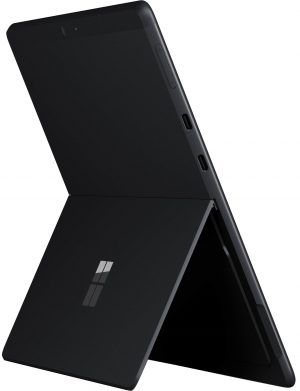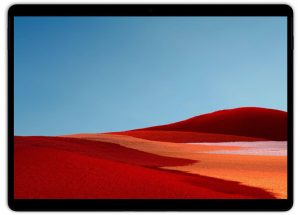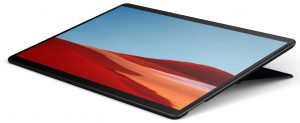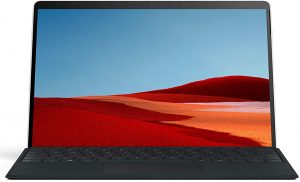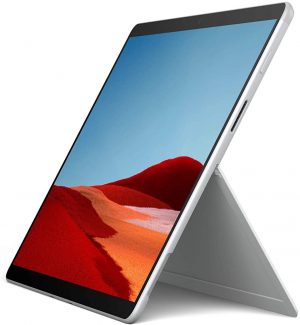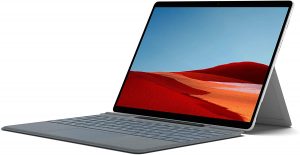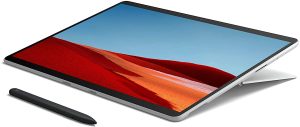Microsoft Surface Pro X
- HDD/SSD
- hasta 512GB SSD
- RAM
- up to 16GB
- OS
- Windows 10 Home, Windows 11 Home, Windows 10 Pro
- Material del cuerpo
- Aluminum
- Dimensiones
- 287 x 208 x 7.3 mm (11.30" x 8.19" x 0.29")
- Peso
- 0.77 kg (1.7 lbs)
- Puertos y conectividad
- 2x USB Type-C
- 3.2 Gen 2 (10 Gbps)
- Wi-Fi
- 802.11ac
- Bluetooth
- 5.0
- Features
- Lector de huellas dactilares
- Cámara web
- 5.0MP Front-Facing + 10.0MP Rear-Facing
- Teclado retroiluminado
- Micrófono
- Dual far-field Studio Mics
- Altavoces
- 2x 2W, Dolby Audio
- Unidad óptica
Todo Microsoft Surface Pro X configuraciones
Rendimiento de la CPU
Aquí puedes encontrar la diferencia de precio/rendimiento entre todas las CPU que vienen en el Microsoft Surface Pro X serie.
Los resultados proceden de la prueba Cinebench 20 Multi-core (cuanto mayor sea la puntuación, mejor)
Rendimiento de la GPU
Aquí puedes encontrar la diferencia de precio/rendimiento entre todas las GPU que vienen en el Microsoft Surface Pro X serie.
Los resultados corresponden a la prueba de referencia 3DMark: Fire Strike (Graphics) (cuanto más alta sea la puntuación, mejor)
Microsoft Surface Pro X revisión en profundidad
Not long ago we managed to snatch a Surface Pro 7 for review, and we were baffled by the versatility this tablet offered. Without a doubt, its strongest ace was the Ice Lake processor inside, which meant you can run pretty much every app on Windows. Now, we have the Surface Pro X, which has a pretty euphonious name but is an inferior device, compared to the Surface Pro 7.One of the main reasons why is the ARM architecture it uses. This means that 64-bit programs are pretty much out of the question. However, the Microsoft SQ1 CPU is based on the Snapdragon 8sx and features a higher clock ([...]
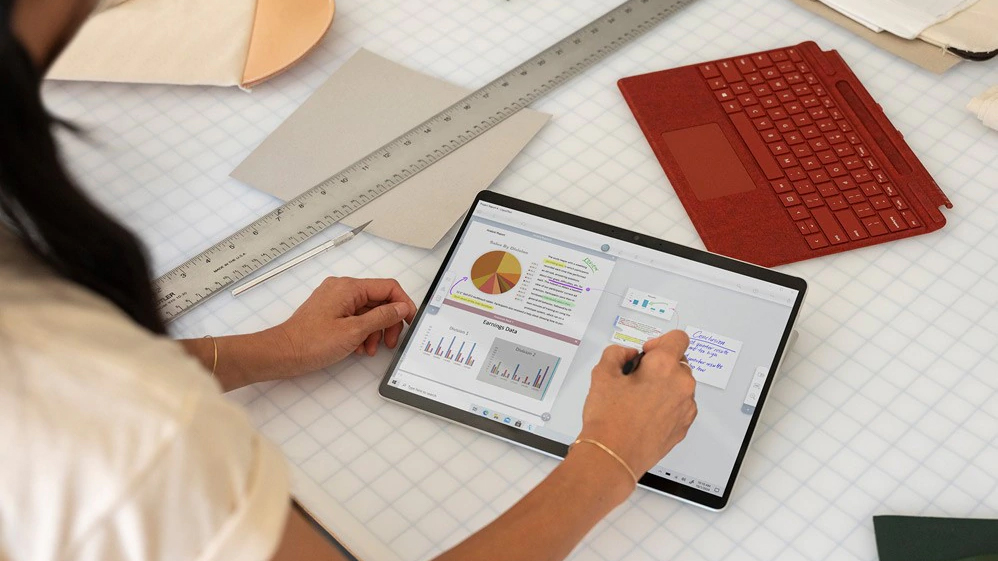
Pros
- Covers 93% of the sRGB gamut (Chi Mei P130ZFA-BA1) and has a great color accuracy
- Thin, light, and premium design
- Very good build quality
- High maximum brightness (450 nits)
- IR face recognition and LTE support
Contras
- Very limited I/O
- Memory is soldered to the motherboard
- Windows is not very well suited for ARM integration in 2020

